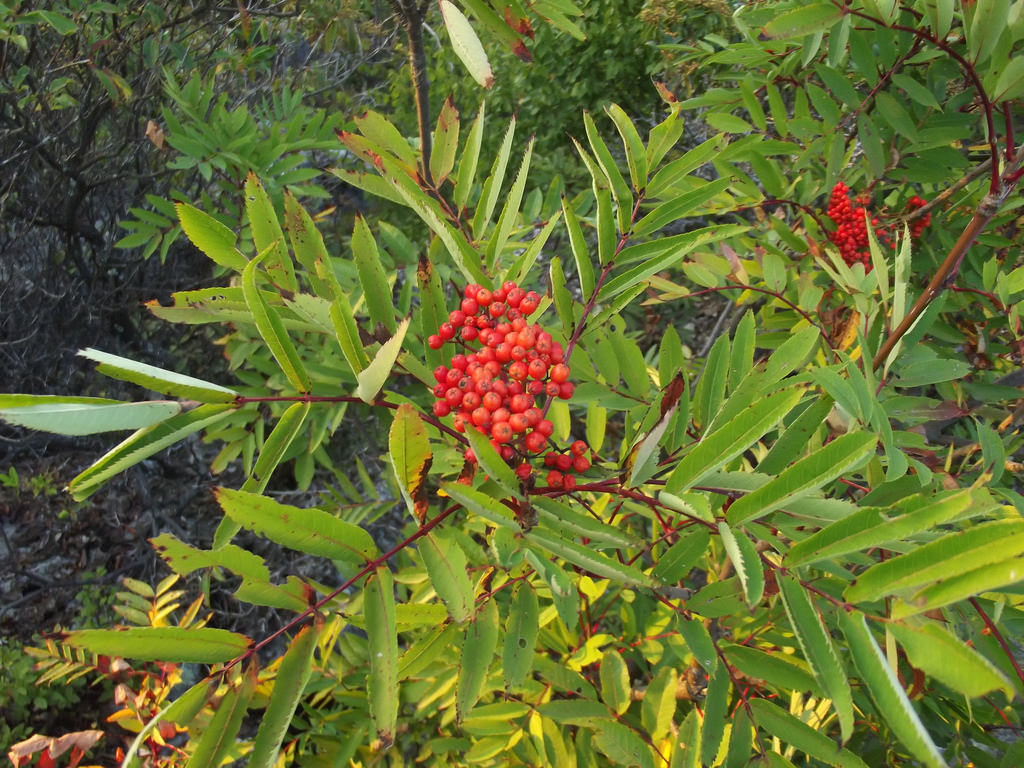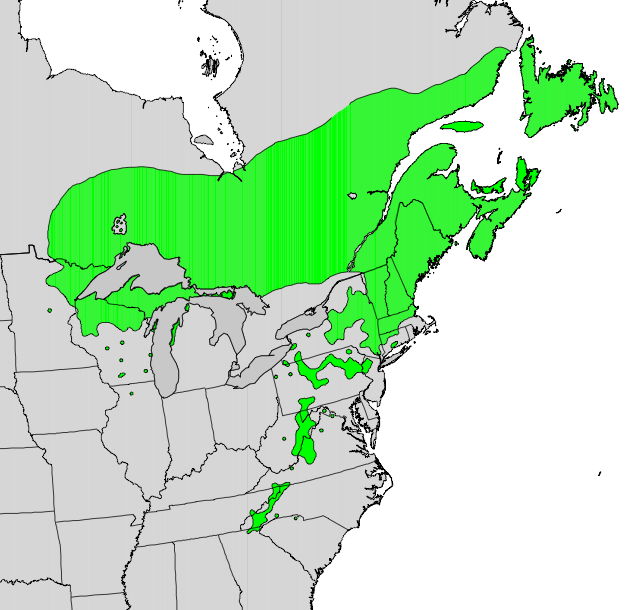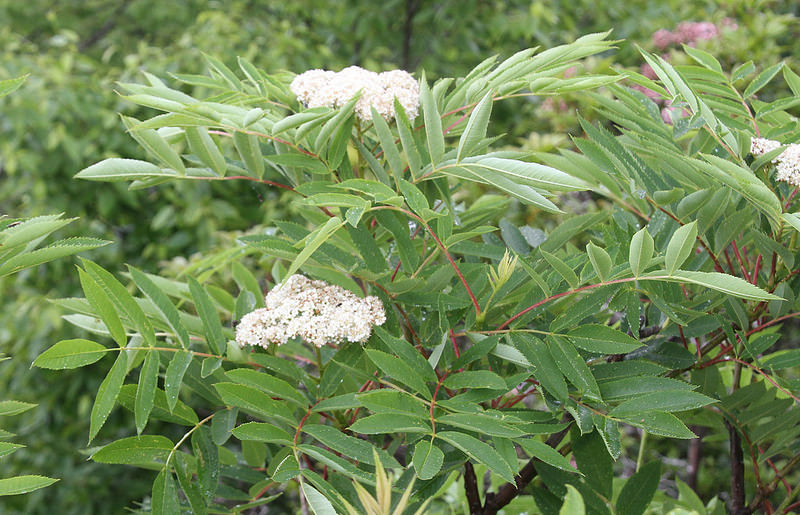Mountain Ash
Sorbus americana Marshall
Description
Mountain ash, also called American rowan, belongs to the rose family (Rosaceae) as opposed to the olive family to which true ash belongs. 5 It is a small tree that grows to 30 feet. The bark is smooth and gray, but becomes scaly with age. 5 It has pinnate leaves with 9 to 17 leaflets, each 2 to 4 inches long and serrated. ¹ Flowers are in dense, 6- inch terminal clusters. Each flower is small and white. ¹ Fruits are bright red berries that remain on the tree into winter. ¹
Leaves and flowers of mountain ash. Maryland Biodiversity Project, J. Stasz ³

Fruits of mountain ash. aMaryland Biodiversity Project, J. Stasz ³
Distribution
Mountain ash is distributed from Newfoundland, Canada to Minnesota and south through New England and along the Appalachian Mountains to Georgia. In Maryland it is found exclusively in Allegeny and Garrett counties and is listed on the watch list (S3). ³

Native distribution of mountain ash. Wikimedia commons 4
Wildlife Importance
Mountain ash is a host species to the American Dagger Moth. ³ Its fruits are eaten by numerous birds and animals and it provides browse for white tailed deer and moose. ¹
Economic Importance
Mountain ash berries are used in products such as marmalade, juices, and tea mixtures. ² Medicinally, mountain ash is taken for diabetes, gout, and heart disease, although there is no scientific evidence for its efficacy. ²
Threats
Mountain ash is a short lived species and significant problems arise from bacterial fireblight and scab. ¹
Interesting Facts
- Bringing beliefs from the Old World, early European settlers used mountains ash to ward off witches. 6
- Because the bark resembles that of the quinine tree, pioneer doctors used American mountain ash to treat malaria.7
References
- North Carolina Extension: Sorbs americana
- WebMD: Mountain ash–uses, side effects and more
- Maryland Biodiversity Project: American mountain ash
- Wikimedia commons: Sorbus americana
- Missouri Botanic Garden: Sorbus americana
- Arbor Day Foundation: American mountainash–the witch wood tree
- Ontario: American mountain-ash
Contributed by J. Hull

